An Apparatus on Human-Machine Co-Authorship
Solo Exhibition, Riverside Project Space, TANK Shanghai / West Bund (CN)
2023
2023
Synthetic Cities is an exhibition that centers on identifying modes of human-machine co-authorship that question and explore creativity and originality. In this instance, the city becomes a symbolic representation that reflects on the human condition and collective and personal expression. It serves as a focal point for constructing narratives that strive to capture originality and contribute to the discourse on how we create, understand, and engage with the co-authored artistic content. The six original works presented in the exhibition function as an interconnected apparatus that invites the viewers into ever-unfolding cityscapes, revealing intriguing connections between reality and imagination and showcasing conditions for an interplay between artificial creation and human perception.
The exhibition is hosted on the Riverside Project Space (Tank Shanghai & West Bund Art Group), and it’s been supported by the West Bund Group, Linso LED | Leyard, DU Studio, and MANA.
Exhibition period: 24 August – 24 September 2023
Creation & Production: Stavros Didakis
Production Coordinator: Huijun Guan
Media Production Assistants: Nora Yutong Liu、Yanrui Shao、Guoxi Yang、Vicky Chen
Space Design: DU Studio
LED Equipment: Leyard | Linso LED
Graphic Design: byscene
Thanks to the West Bund Art Museum Operations Team, West Bund Art Center Operations Team, Interactive Media Arts (NYU Shanghai), and NYU Shanghai.
The collaboration between humans and computational machines in the creative process is a topic that has been meticulously explored in the past and continues to hold immense significance today. With the emergence of a plethora of Artificial Intelligence and Machine Learning applications, we are now confronted with a large set of tools that disrupt and contextualize norms of creativity. This diagram captures the artist’s insights and observations during the development of the exhibition “Synthetic Cities”. Functioning as
a blueprint, it elucidates the intricate avenues navigated during the course
of co-authored creation.
As biological machines, we are influenced by a large number of factors that drive our thoughts and actions: biological properties, brain chemistry, health & well-being, cognitive bias, past experiences, cultural background, philosophical beliefs, social environment, temporal elements, and so on. These factors shape who we are, including our perception, imagination, and creativity. This becomes the starting point in identifying methodologies for the development of original content (heuristics and poiesis). Combined with machine agents and their technological apparatus, the human creator attempts to produce artifacts that follow conceptual, aesthetic, and often technical characteristics of imaginary planes. Via multiple iterations, the initial outputs are calibrated and fine-tuned in an attempt to pass thresholds of commonality and establish content that closely matches the set criteria, which are often in a state of flux. If the content passes the evaluation levels, it is forwarded to corresponding platforms that may occur at different or similar times, media, scales, and spaces.
Science is the study of physical reality that helps us to gain a deeper comprehension of our world and the essence of humanity. Microscopes grant us views on atomic and nano scales, while telescopes expand our vision of the cosmos and its beginnings. Advances in computational sciences have paved the way for us to experience novel, artificially-constructed realities that emerge from latent spaces generated by systems trained on vast datasets. Even though the crafted content is an amalgamation of pre-existing elements, its impact, and significance in our world are undeniable, unveiling an informational capacity previously unimagined.
“Neural Cityscapes” is an immersive work that offers viewers an audiovisual journey into cityscapes that have been produced with artificial means. A series of media screens, arranged on custom-built architectural pillars, serve as portals to a series of videos that reveal a mosaic of fictional landscapes, meticulously woven together through custom-built software. The work is accompanied by a sound composition that attempts to enhance the visual narratives with a mesmerizing electric ambiance. Through the lenses of the machine, we submerge into a pool of generative environments, and, despite their artificial origins, their existence becomes real. They reside within the observer’s mind and they seamlessly meld into our collective imagination.
Video Generation, Concept & Production: Stavros Didakis
Sound Composition: Frankfurt Helmet
VFX Mixing: Bing
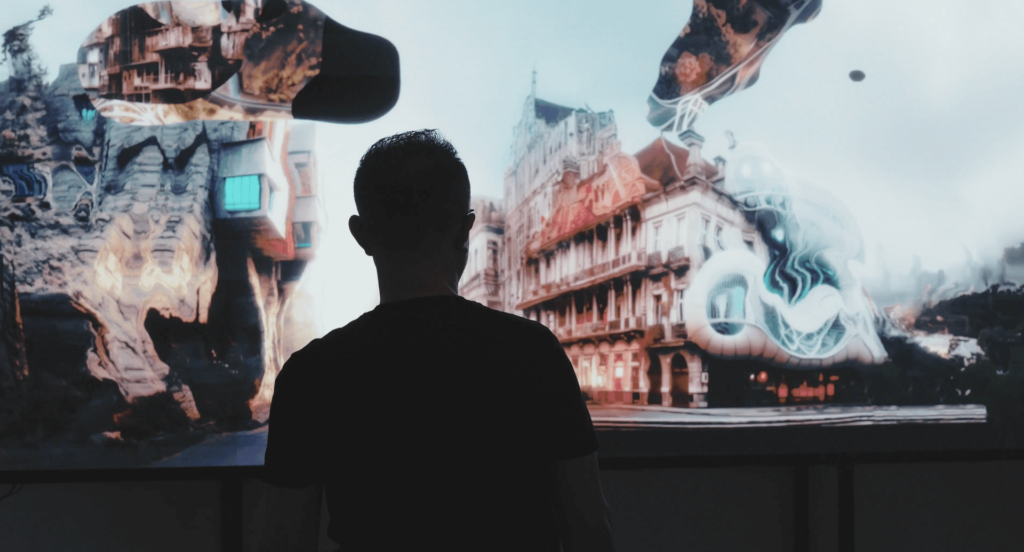
“The interesting thing about the panorama is to see the true city—a city inside a building. What stands in the windowless building is the truth… (the truth has no windows; nowhere does it look out upon the universe).” Walter Benjamin, Das Passagenwerk
Panoramas were established as an art form in the 19th century, and they have become synonymous with an immersive and expansive visual experience of cityscapes. Panoramas position the observer inside the image and allow us to view a continuous flow of experiences, immersed in the space they project. “The Synthetic Realm” is an interactive work that displays fluid renditions of machine-generated city panoramas that remain unchanged unless they come in close proximity to a human. A computer vision analysis system awaits to sense a human present, and when this happens, it begins to ceaselessly dissolve multiple layers in a continuous cycle. The panoramas have been composed by the artist in such a way as to offer views of diverse urban landscapes that collide and collectively evolve. The installation aspires to deepen the viewer‘s engagement with the artificial milieu, constructing a link between our recognized reality and the transient digital cosmos. It encourages contemplation on the dynamic interplay between the material
and the digitally synthetic, creating a space where alternative domains converge and interact.
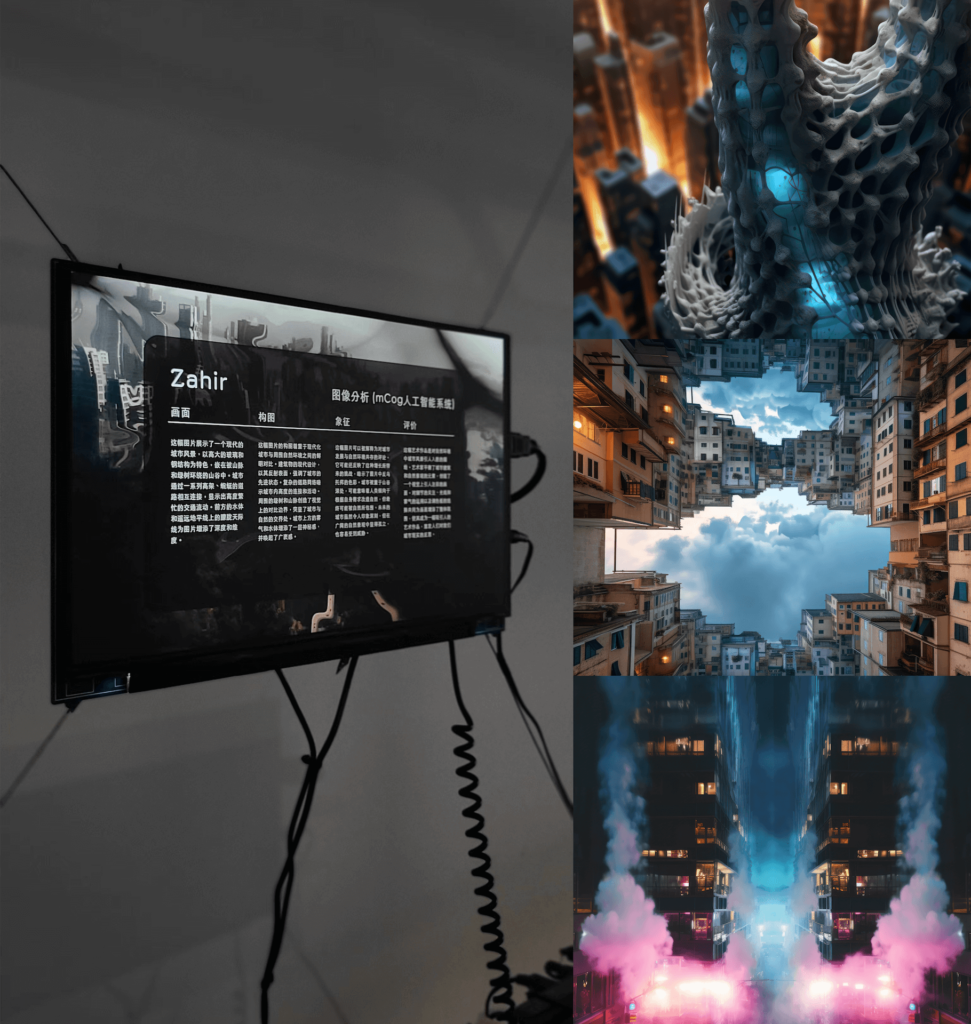
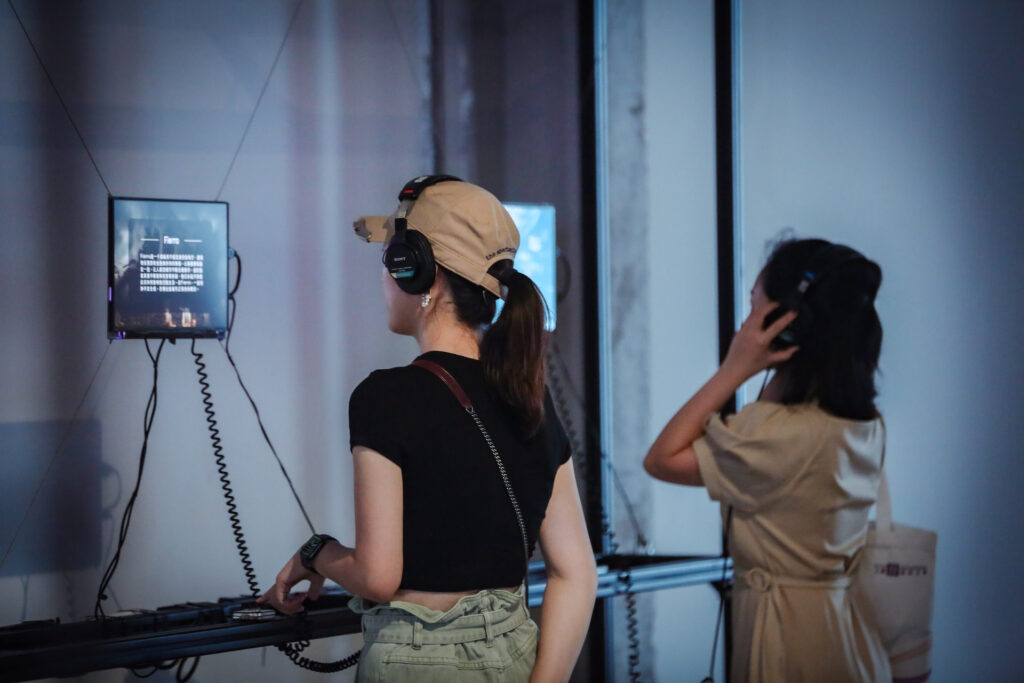
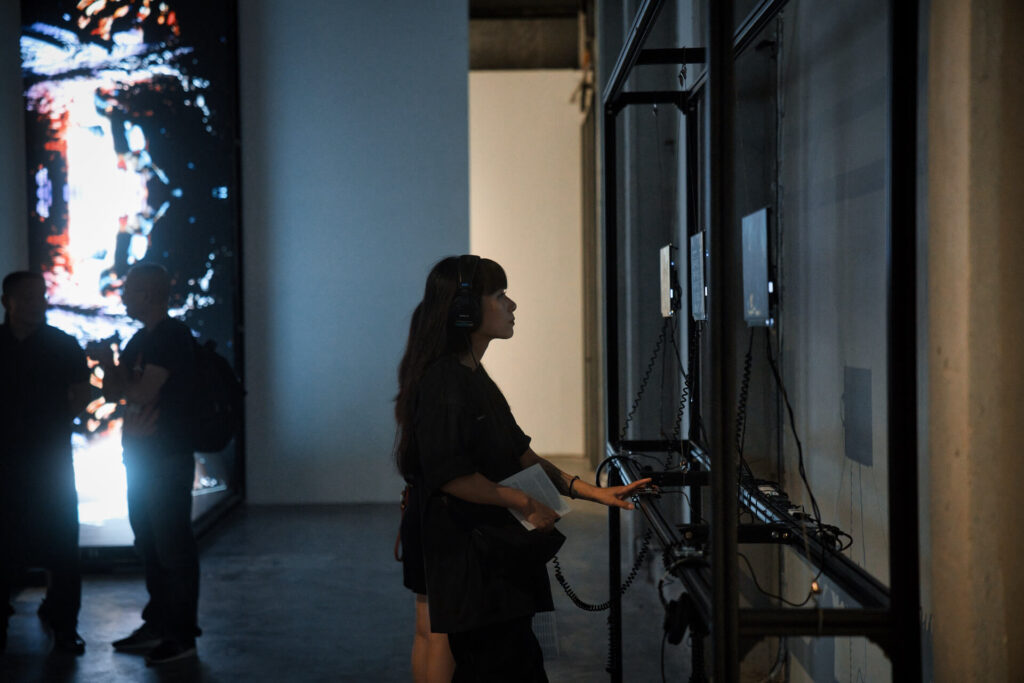
Italo Calvino’s novel “Invisible Cities,” published in 1972, serves as a direct source of inspiration for this work. Within the novel, Calvino places a fictitious Marco Polo in a dialogue with Emperor Kublai Khan. In this exchange, Marco Polo recounts the cities he has visited during his travels across Asia. The cities, however, are not real; they do not appear on maps and there is no proof that they have ever existed; they are only a reflection of Marco Polo’s vivid imagination. Influenced by Calvino’s work, “Urban Echoes” comes into a discussion with the audience and narrates cities that have been generated within the fluid consciousness of humans and machines. Herein, the viewer will find on the display system hundreds of co-authored cities with each one presenting a particular city narrative.
The constraints for the creation process were to identify a specific context (the city), to utilize a prose format for the textual content, and to ensure that each one of the outputs diverges as much as possible from the other ones. At the same time, it was important to ensure a high level of coherency in the final result. The narratives aim to demonstrate symbolic and emotional representations that request subjective interpretations and further assist to provoke personalized meanings as they operate within unique social, cultural, and individualistic perceptual constructs. At the same time, it motivates the audience to question the role of the author and to reflect on the process of co-authorship.
Each narrative is presented as visual imagery accompanied by a machine-generated voice. There are two versions the visitor may find, one in English, and one in Chinese, and with the use of an interactive controller, the visitors may navigate within the cities and explore layers of analysis associated with each one of them individually. Every city has been processed with a meta-cognitive (mCog) layer, a collection of AI systems designed to provide quantitative and qualitative feedback on the associated images and texts. The purpose of this analysis is to assess the co-authored content, and, in addition to this, view and understand how a computational system is able to reflect on the generated creative outputs.
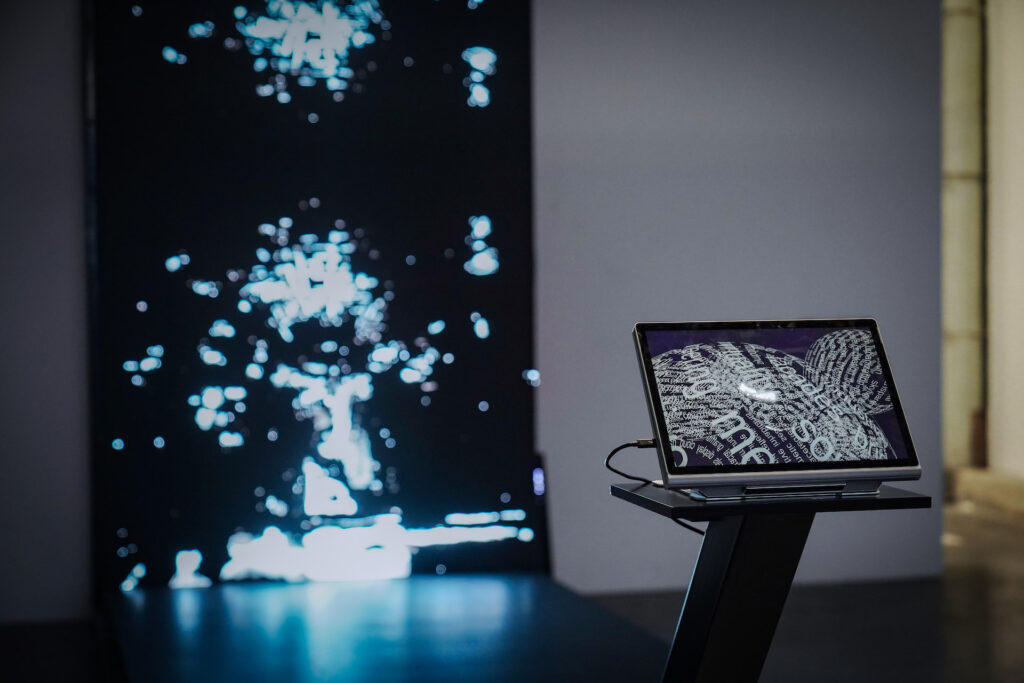
Prompting and prompt engineering are terms associated with the way a specific request is given to an artificially-intelligent system. The system‘s algorithms analyze the given prompt using natural language processing, extracting specific keywords and features that are then mapped to indexes within the datasets the system has been trained on. During this process, the machine establishes necessary associations and draws conclusions that align more closely with the user‘s prompts. Human input is essential for the system. Incomplete prompts or limited datasets significantly diminish the likelihood of generating coherent and valuable outcomes.
“Co-Authored Traversals” highlights this symbiotic relationship between humans and computational systems and presents an apparatus of screens and software systems that poetically reference this convoluted process.
Utilizing a data-scraping algorithm, millions of prompts used for text-to-image creation were extracted from online databases and categorized into a custom dataset of a thousand words. The audience is presented with a touchscreen interface that contains every word mapped on a series of rotating spheres. By activating the interface (through touch), the intersected words transition into a state of fluidity that affects the generated visual imagery in realtime.
This cybernetic ecology attempts to depict the mutualistic symbiosis between biological and computational agents. The actions of every system and process are equally essential to maintain a functional entity. Computational machines are important to us, as much as we (as humans) are to them.

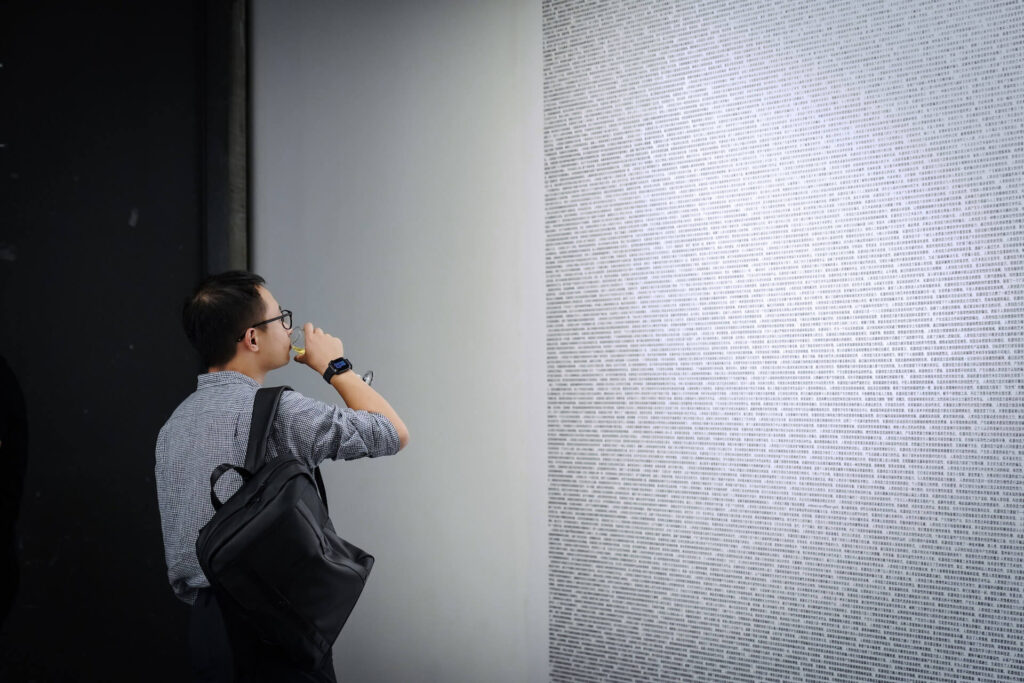
What is human creativity? What is machine creativity? How can we best describe these terms? Is there only one way to analyze them, or should they
be approached according to different cases and scenarios? This work answers these questions by utilizing a series of human-machine collaboration modes
to produce thousands of original definitions of human and machine creativity.
It has already been demonstrated that AI systems possess a remarkable capacity to discover new patterns and relationships within complex tasks far better than humans. If provided with a large dataset, an AI system can scan an entire field of possible combinations and return outputs that can be considered novel or even ingenious. In the case of identifying patterns within a dataset, artificial intelligence excels. However, in the case where the machine needs to expand the boundaries of its knowledge base and extrapolate from the outset of the training dataset, its performance is challenged. This extrapolative characteristic is important for the machine to demonstrate that it is able to generate originality.
To achieve thousands of original definitions in a specific context, as in this work, it is important to consider the dataset patterns that a computational system can use, combined with the extrapolative quality of a human. This collaboration possesses a much larger capacity to produce outputs that hint at creativity and originality.
Viewers are tasked with perceiving the juxtapositions and parallels within this dichotomy. Amidst this ceaseless flow of definitions, the distinction between human and machine creativity becomes intriguingly porous, often merging in a provocative overlap that suggests a previously unseen connection. This engagement encourages an exploration of the fluid and often blurred boundaries of creativity, ultimately questioning the binary oppositions that are often taken for granted, and offering an exploration into the converging realm of human and machine co-authoring.